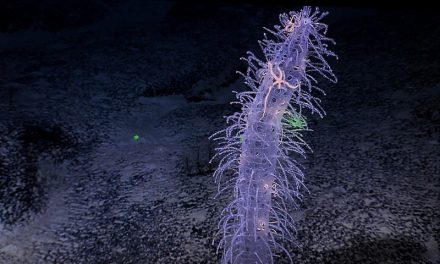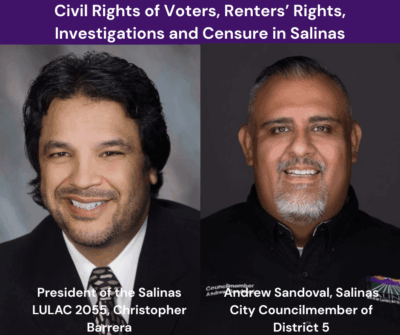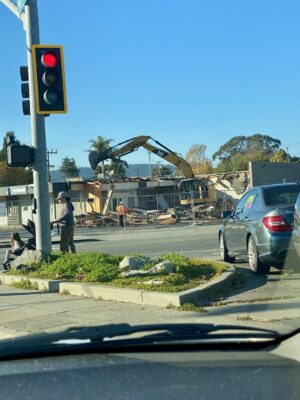
The question of whether to develop a passenger rail system along the Santa Cruz Branch Rail Line has been explored, questioned, developed, studied, contested and voted on across an arc of nearly four decades. Santa Cruz county stands before two important inflection points related to this project. One is an imminent Regional Transportation Commission in-depth study to explore the engineering and environmental realities of delivering a light-rail system to our region; The other is a critical election coming up March 5 for three open District Supervisor seats. Those who claim these posts will be in powerful positions relative to the rail question.
I am Christine Barrington and a regular talk show host at KSQD. If you are anything like me, you have likely felt confused and perhaps befuddled by the complication and contentiousness of the Rail and Trail. And, what is this project, really? Is it Rail? Is it a Trail. Both? Neither? What?!! Given the dire state of traffic in our region, and the deep concern I feel around climate issues, I set out to clarify my own confusion and document my journey to understand. Along the way I discovered that projects of this scale and complexity are epic, with champions and challengers, visionaries and volunteers, policy makers and politicians–and so many studies and story lines it makes the head spin.
What I also discovered is that, ultimately, the story of the Rail and Trail is about people–people who vote, people who plan, and people who politic. I met some incredible people in my quest to grasp the arc of the Rail and Trail possibility, and I hope you enjoy the journey with me.
In this initial episode we go back in time to capture the first glimpses of the vision for the Rail-Trail. Featured Guests: Congressman Sam Farr, Former Regional Transportation Executive Director (1985-2005) Linda Wilshusen, John Brissenden, Co-Founder of Land Trust Santa Cruz, the Community Foundation, as well as Life Lab, and Micah Posner, former Executive Director of People Power, and co-founder of Friends of the Rail and Trail.
For a history of rail in Santa Cruz please enjoy this excellent show from KSQD’s Len Beyea: Derek Whaley shares the history of train routes through the Santa Cruz mountains and how they changed the destiny of this region
Rail-Trail Episodes:
#1) The Rail & Trail: Visiting the Past; Finding the Future
#2) The Rail & Trail Part 2: 2206-2018: George Dondero, Cory Caletti and John Leopold
#4) Friends of the Rail and Trail
#5) The Rail and Trail in Watsonville and Beyond
Bonus show: Mitigating Environmental Impacts of the Rail and Trail with Senior Ecologist Justin Davilla













Oh dear. RTC’s own studies already told us a passenger train would not relieve traffic on Hwy 1! Supervisor Ellen Pirie, upon purchase of the coastal corridor, notably said, “It was never viable for a passenger train.., the train people aren’t going to go away.. but that’s a fight for another day.” Oh brother, and here we are, all these years later. We failed to avail ourselves of the Federal Railbanking Act (tailor made for our situation) designed as it was to preserve the right of way and avoid the harsh realities that are hitting us now; RTC forcing eminent domain on residents along the tracks. This purchase was heralded as a Community asset and here we are shut out still.
I was heartily glad to see Watsonville resident Della Davis LTE at SC Good Times this week. More of these questions please!
‘The Hidden Cost of Passenger Rail
Are the right questions being asked?’
“Why isn’t the total estimated cost of the train plan being fully considered now? This glaring concern has left many residents wondering if our small community, spanning the Boardwalk to Watsonville, is being left in the dark about the financial reality of a passenger train and little trail.
RTC’s (Regional Transportation Commission) own pre-pandemic study estimated the project at $1.3 billion to build. Operating costs have not yet been estimated but it is expected that these will be taxpayer subsidized. Experts now warn that inflation and updated requirements could push that construction number to $5 billion or higher. What does this kind of cost inflation mean for future operating costs?
Moving ahead without an official updated estimate including operating costs adds to more meaningless studies that we the taxpayers have funded and will continue to fund. These studies that are using up our transportation budget are asking about premature items of design while leaving taxpayers uninformed about the most critical financial burden they may ultimately bear.”
Della Davis
Watsonville
Sincerely,